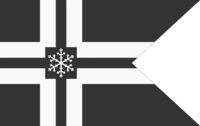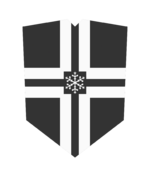Candaria
This article is incomplete because it is pending further input from participants, or it is a work-in-progress by one author. Please comment on this article's talk page to share your input, comments and questions. Note: To contribute to this article, you may need to seek help from the author(s) of this page. |
United Provinces of Candaria Aaǧukeerzan Kandar (KN) | |
|---|---|
| Capital | Gracemeria |
| Largest | Lieri |
| Official languages | Kandari |
| Recognised regional languages | Keizaani Kyeraari Feikari Unthari |
| Other spoken languages | Common |
| Ethnic groups (2023) | 99.9%: Kandari 0.1%: Others |
| Religion (2023) | 99.9%: Folk religions 0.1%: Others |
| Demonym(s) | Kandari (Singular) Kandarin (Plural) |
| Government | Federal theocratic absolute monarchy with a direct democracy |
| Mařgarēð IV | |
| Ǩalvā XXV | |
| Ševtsā Veltūyn | |
| Legislature | Kandari Federal Congress |
| Establishment | |
| 14000 BCE | |
• Battle of Velaun (Mythical) | 5000 BCE |
| 700 BCE | |
| 1413-1453 | |
| 1620-1700 | |
| 1853-1916 | |
| 4 October 1920 | |
| Area | |
• | 1,061,816.71 km2 (409,969.72 sq mi) |
| Population | |
• 2023 estimate | 21,372,062 |
• Density | 20.13/km2 (52.1/sq mi) |
| GDP (PPP) | 2023 estimate |
• Total | $905.937 billion |
• Per capita | $42,388 |
| GDP (nominal) | 2023 estimate |
• Total | $1,549.153 billion |
• Per capita | $72,485 |
| Gini (2023) | 22.31 low |
| HDI | very high |
| Currency | Reasva (RSV) |
| Date format | DD/MM/YYYY |
| Driving side | right |
| Calling code | +41 |
| ISO 3166 code | KZ |
| Internet TLD | .kd |
History
The Long Night
Warring Provinces Periode
Unification War
Age of Sail
Industrial Revolution
New Candaria Deal
Geography
Climate
Environment
Urbanization
Government and Politics
Federal Congress
Royal Family
Direct Democracy
Administrative Divisions
Provinces
Cantons
Self-Administered Provinces
Foreign Relations
Military
Education and Science
School System
Education in Candaria is diverse as the Constitution of Candaria delegates the operation for the school system to the provinces. Public schools are the norm, private schools don't exist as they are prohibited by the law, most public schools are campuses where student from age 4 to 22 learn together in the same establishment. Most campuses feature municipality-funded cafeterias with low prices for students and a lot of activities exist aside from work. The Candarian School System prioritizes pedagogy and children with disabilities and other difficulties are given much more attention. A teacher requires at least a Bachelor's degree in pedagogy, a Federal Capacity Certificate or FCC and 6 years of experience in the domain they want to teach, but also an FCC in Teaching.
Primary and Secondary Education
The minimum age for school is about four years old and end at age 22, a total of 18 years of school divided into Primary or First Degree Education, which encompass the first nine years, and Secondary or Second Degree Education, which encompass the rest of their time in the establishment. Each Second Degree at their entry in Secondary Education is assigned as First Degree as their "Apprentice", the system is put in place to help First Degrees in case they have problems during classes or homework, it is also a good way for Second Degrees to learn how to be responsible of someone younger than them. The year system is divided in F1 to F9 for Primary and S1 to S9 for Secondary.
Tertiary Education
After mandatory school, students are able to go in three main paths, the first one is known as "Apprenticeship" which is a process where student will be working on their desired choice of career either in a school specialized in said career or do only part of it in school while the other part is done in a company where they can directly learn and where they can, sometimes, get hired if their work or grades are satisfying. The second one is vocational maturity which is a two to three year process where student are able to prepare for higher education like universities, at the end of their cursus they receive a Vocational Certificate or VC, which is required for most high education establishments like colleges, universities and other higher instances. The third, and considered the most prestigious, is the Military Academy, which is the military equivalent of universities, however with military discipline, they are tuition-free and government-funded like most universities. The only way to join is to be at least a Senior Sergeant or Senior Petty Officer in the Armed Forces with a recommendation from their regimental commander or squadron commander.
Higher Education
Candaria hosts 15 universities, 12 of which are managed at the Provincial level, they generally offer non-technical subjects. It ranked 7th on the 2022 Ranking of Elezian Higher Education Instances. The largest is the Federal Institute of Technology of Kylesvar in the Province of Whistlewood with around 31,000 students, 6,200 academic staff and 2,900 administrative staff in a campus of around 97 square kilometers, about 47.5 square miles or 23969.2 acres. Making it the 10th largest by enrollment and 2nd largest in area after the Providence Institute of Technology in Hesperia.
The Imperial Government sponsors three institutes: the Federal Institute of Technology of Kylesvar, founded in 1731, the Federal University of Gracemeria, founded in 1291 and the Sylvarinsa Federal Sports College, founded in 1812, which is directly government-owned.
All universities possess a campus, rarely under 15,000 acres, the system of campus was imported from Hesperia in 1817 and was made mandatory for all universities. They also imported clubs, mascots, university sports teams in multiple disciplines, university merchandise, university newspapers and information feeds and most importantly international students. Clubs are generally pretty homogenous among universities, yet some do stick out like the University of Syliera with the Micronations Club (Also known as the Micronations Committee). All universities also possess a mascot, merchandise and sports teams, especially in Basketball, Hockey, Volleyball, Hornussen, Skiing and Swimming. Compared to Hesperian universities, Candarian ones are more conservative, especially of traditions and values. Most of them possess a flag, and anthem, a uniform and a motto, which can bring more attachment to the university from students as they are part of something that is greater than themselves.
Science
Candaria drives science in many fields including biology, geology, agrobiology, aerology, climatology and ecology. It birthed many Verlaine Prize laureates including Lyre Samvə̄r, Kysnela Kutbagi, Řijada Luvmel, Sanko Ǩūfra and Varkōhe Južmaš received the Verlaine Science Prize. In total, 93 laureates across all fields have a relation to Candaria.
Energy
Candaria is the world leader in renewable energy. 100% of the electricity grid is produced by renewable resources. Most of the energy supply geothermal energy provides 70% of the total energy supply, while hydropower provides about 25%, the last 5% are fossil fuels from imports such as oil products.
The Candarian Government plans to reach total carbon neutrality by 2028. The main obstacle currently being international travel which still has to be provided by fossil fuels like oil or liquified natural gas.
In 2022, the total energy consumption in Candaria was about 314,700 GWh. Esvan National Energy provided most of the energy at about 73%, along with Kystan-East March Energy which provided 22%, the last 5% being fossil fuels, they were provided by international oil and liquified natural gas companies, as Candaria doesn't possess any oil fields.
Transport
Candaria possesses the second longest train system in the world, just after Musashi, spanning over 132,727 kilometers, it is the densest train network on Borealia and carries over 1.29 billion passenger annually in 2022. It is mostly used by Candarians, but a lot of Hesperians and Pyrians use it while travelling, the system being fully electrified and fares being very low. The entire network is maintained by the Candarian Federal Railways Company (KSV/CFR) which is completely government owned. Some small companies exist for provincial-level travel, but are mostly funded by the federal government and operate generally in the more mountainous regions with rack railways but also smaller passenger trains. The entire country functions on the Borealia Track Standard System for rail, it is the same for passenger and fret, at 1,435 millimeters or 4 feet 8 1⁄2 inches. The longest trip goes from the town of West Point in the Province of Black Reach to the city of Vysmarna in the Province of Silvervale at 2,094 kilometers.
Kylesvar International Airport (KYL) is Candari's largest airport, both in area and passengers, at respectively 44.9 square kilometers (17.34 square miles) and over 15.6 million passengers in 2022. The second largest is Gracemeria Metropolitan International Airport (GME) at 35.7 square kilometers (13.78 square miles) and over 10.2 million passengers in 2022.
Environment
Demographics
Religions
Ethnic Groups
Languages
Largest Cities
Health
Culture
Literature
Media
Sports
Cuisine
See Also
Notes
Reference

